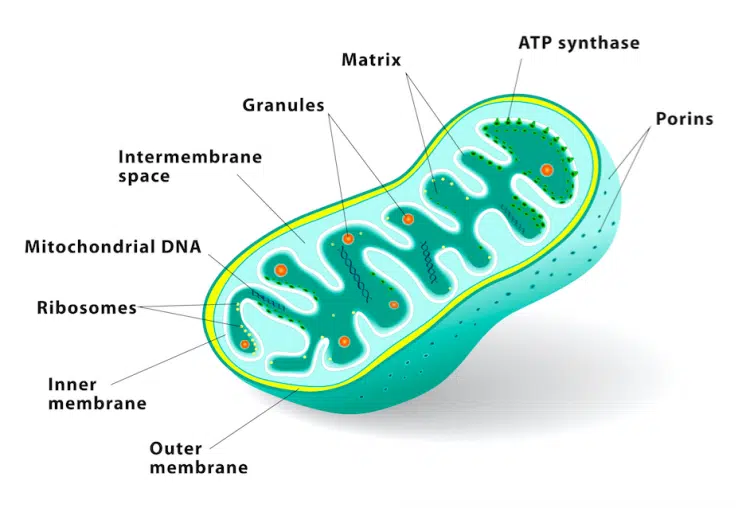Kickboxing is primarily an aerobic exercise that enhances cardiovascular health by burning calories efficiently. It significantly boosts muscle mass while reducing fat. A 155-pound individual burns approximately 372 calories in 30 minutes.
Ever wonder how your body produces energy during your kickboxing class or match? Need to optimize your training to get a competitive edge over your opponents? Well, you have come to the right place.
Below, we will dive into the intricacies of energy metabolism in kickboxing so that you can better understand how your body works as you train to avoid wasting time in the gym and optimize your kickboxing fitness and results.
These are the exact principles I have learned as a 10-year veteran strength & conditioning coach and performance physical therapist to help athletes accelerate their performance. I am sharing them with you today so you can do the same as a kickboxer.
Is Kickboxing Aerobic or Anaerobic?
Due to its duration, kickboxing’s predominant energy system is aerobic. The aerobic energy system plays the most significant role in producing energy in sports or activities where one must sustain a specific output for more than a few minutes. (1)
This is because the aerobic energy system produces the most adenosine triphosphate (ATP) per second and can provide the fuel required for prolonged activities. ATP is the currency for movement in the body (1). It plays a critical role in the contractions of your muscles to perform activities like kickboxing.
Level Up Your Fitness: Join our 💪 strong community in Fitness Volt Newsletter. Get daily inspiration, expert-backed workouts, nutrition tips, the latest in strength sports, and the support you need to reach your goals. Subscribe for free!
This is in contrast to anaerobic energy systems, where you can produce ATP rapidly but not to the magnitude required to maintain the duration needed for kickboxing. (2)
However, it’s important to note that the anaerobic energy system does play a role in kickboxing because of the rapid movements that take place in the sport. Like most combat sports, you will typically maintain a consistent flow of activity as you jab, defend, and move around the ring or mat.
Then, at just the right time, you will find an opening in your opponent or be signaled in a fitness class to unleash a myriad of quick punches or kicks. This action, although brief, calls on the anaerobic energy systems briefly.
Introduction To Kickboxing
Kickboxing is a combat sport and is now a fitness methodology due to its high-calorie demand and effects on overall strength, body composition, and health.
It is a dynamic and intense sport that combines elements of traditional martial arts with modern techniques involving punches and kicks to strike an opponent or a bag. But in the realm of fitness, the sport is transformed into a fitness methodology that takes advantage of competitive kickboxers’ training.
Kickboxing’s main benefit as a fitness method is its emphasis on cardiovascular exercise. It is common in a kickboxing class to work above a resting heart rate for 30-45 minutes using timed sets, circuits, and sometimes sparring with other class members.
Since kickboxing involves using the arms, legs, and core, it can be a great way to get a full-body workout while enhancing your coordination and reflexes, providing stress relief, and increasing mental focus.
Aerobic vs. Anaerobic Metabolism In Kickboxing
Here are the differences between the two:
Aerobic Metabolism
Aerobic metabolism occurs in the mitochondria of cells and requires oxygen (1). Its primary macronutrients are fats and carbohydrates, but when fuel is low, protein may be utilized to produce energy or ATP. (3)
Within aerobic activities such as kickboxing, the primary reaction is aerobic respiration, breaking down glucose to produce carbon dioxide, water, and ultimately ATP to produce work.
The most significant benefit of aerobic metabolism over anaerobic metabolism is that it can produce up to thirty-seven molecules of ATP per one glucose molecule (sugar) (3). In contrast, anaerobic metabolism can only produce two net molecules of ATP per glucose molecule. (3)
The crux is that although aerobic metabolism can produce almost 20x the amount of ATP as anaerobic metabolism, it takes considerably longer (4). Thus, it is better suited for slow(er) and moderate to low-intensity activities such as kickboxing.
Anaerobic Metabolism
Anaerobic metabolism takes place in the cell’s cytoplasm and occurs in the absence of oxygen (2). Unlike aerobic metabolism, which prioritizes aerobic respiration, anaerobic energy production has two energy system pathways (2). These include the glycolytic and phosphagen systems, with the former used for moderate-duration efforts and the latter used for short and intense bursts of movement.
Since anaerobic metabolism primarily involves short, high-power activities, it must produce ATP rapidly. Unfortunately, it is unable to sustain itself beyond several minutes. (2)
If you were ever in a kickboxing class and increased the pace at which you were executing punches and kicks and felt yourself start fast but after about thirty seconds begin to feel your limbs get heavy, breath rate increase and need to slow down, you have experienced the fatigue of the anaerobic energy system.
Level Up Your Fitness: Join our 💪 strong community in Fitness Volt Newsletter. Get daily inspiration, expert-backed workouts, nutrition tips, the latest in strength sports, and the support you need to reach your goals. Subscribe for free!
Energy Systems Within Kickboxing
Now that we’ve reviewed the types of energy metabolism you’ll find in kickboxing, we can dive deeper into the actual energy systems that will keep you moving for the duration of the match or fitness class.
All energy systems below contribute to your body’s total ATP pool at any given time. However, depending on the intensity and duration of the exercise you are doing, one may be the dominant energy system for that activity.
Regarding kickboxing, all systems will be used; however, the oxidative system will be most relied on, with intermittent uses of the high-intensity systems, such as the phosphagen system for quick strikes and the glycolytic system for challenging periods of high-effort punches and kicks.
Phosphagen Energy System
The phosphagen system is the primary energy system for explosive activities such as a rapid combination of punches or kicks in a kickboxing class (3). You’ll also predominantly use this system while running on the track as fast as possible. (3)
This system is one hundred percent part of the anaerobic metabolism bucket and lasts only ten to thirty seconds in trained individuals. (3)
The performance of your phosphagen system depends on the strength of your muscles and if you have the nervous system recruitment to move fast enough to utilize it.
This energy system can often not be used by individuals who don’t regularly strength train since their central nervous system cannot recruit enough motor units for maximal intensity actions.
Glycolytic Energy System
The glycolytic system has two phases: fast and slow. Fast glycolysis is more closely related to the phosphagen system and anaerobic metabolism. In contrast, slow glycolysis resembles the oxidative system and aerobic metabolism.
Fast glycolysis takes over as the phosphagen system fatigues. It will be the primary energy system for activities between thirty seconds and two minutes (3). You may have felt this energy system during a match with about two minutes left on the clock when you wanted to “empty the tank” with as many punches or kicks as possible at a fast but not maximum pace.
Slow glycolysis takes over after roughly two minutes and lasts until about three minutes. Slow glycolysis is similar to fast glycolysis, but as the name implies, it provides ATP for work at a slower rate, resulting in a slower pace of exercise.
Since the glycolytic energy system is relatively high intensity, you will also find the most lactic acid production in kickboxing activities lasting within these time ranges. This is because of a reaction with a substance called pyruvate, which is a byproduct. (3)
If the exercise intensity is high enough, pyruvate will be recycled to make lactic acid as another energy source (3). It will also produce an uncomfortable burning sensation in the muscle.
Oxidative Energy System
The oxidative energy system is the primary energy system in aerobic metabolism and kickboxing. This energy system relies on the presence of oxygen so that it can serve as the final electron acceptor in the ETC, as mentioned above (2). However, the duration and intensity of exercise dictate whether or not this is the primary system.
The oxidative system is the most significant contributor during longer and lower-intensity exercises that last beyond three minutes and can last for hours and hours in trained individuals. (3)
It is important to note that lower intensity refers to “relative” intensity, as you may be asking yourself how this could be since kickboxing classes can get very intense.
Exercises using the oxidative system can be very tough, but it is slower-paced than the phosphagen and glycolytic systems. Conversely, it is also the primary energy source during rest and nonexercise activities.
Final Thoughts
You now have everything you need to know regarding energy systems used during kickboxing. Unfortunately, energy systems are not as black and white as you may have thought initially since, at any given moment, all three systems contribute to your body’s ATP needs.
However, the emphasis on each will shift as you engage in different exercises and movements within the exercise. For example, in a kickboxing class, the total workout can last thirty to sixty minutes, with brief combinations or drills requiring explosive or high-intensity efforts.
By understanding the complex interplay of these different energy systems and the two types of energy metabolism, you can better grasp how your body works.
Ultimately, fine-tune your training to get the most out of your kickboxing workout. So, bring this knowledge with you to the next class or match and optimize your fitness!
Read also:
- Ditch Boring Gym Routines & Discover This Action-Packed Workout
- Melt Fat Fast: The Ultimate 20-Minute Kickboxing Workout for Home
- Top 7 Kickboxing Benefits For Health & Fitness
- Best Kickboxing Workout: Unleash Your Inner Champion
References:
- Alghannam, A. F., Ghaith, M. M., & Alhussain, M. H. (2021). Regulation of Energy Substrate Metabolism in Endurance Exercise. International journal of environmental research and public health, 18(9), 4963.
- Gastin P. B. (2001). Energy system interaction and relative contribution during maximal exercise. Sports medicine (Auckland, N.Z.), 31(10), 725–741.
- Baker, J. S., McCormick, M. C., & Robergs, R. A. (2010). Interaction among Skeletal Muscle Metabolic Energy Systems during Intense Exercise. Journal of nutrition and metabolism, 2010, 905612.
- Gastin P. B. (2001). Energy system interaction and relative contribution during maximal exercise. Sports medicine (Auckland, N.Z.), 31(10), 725–741.











